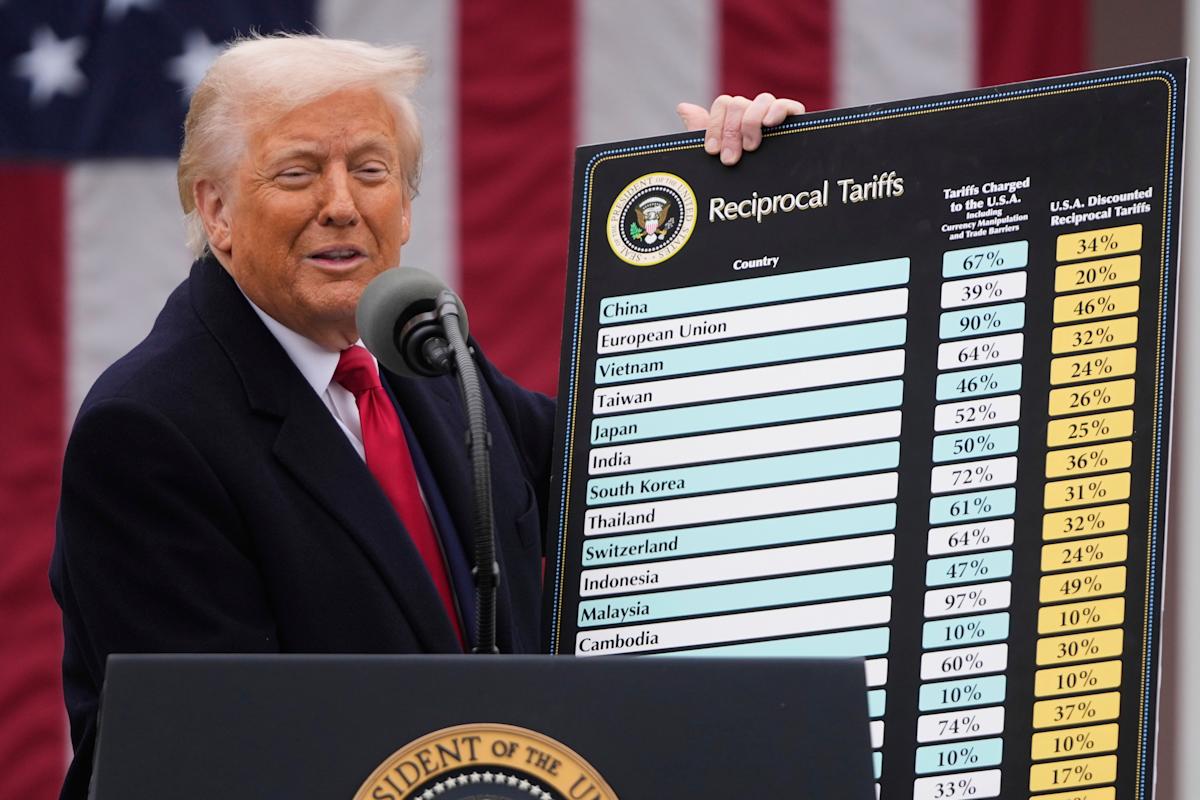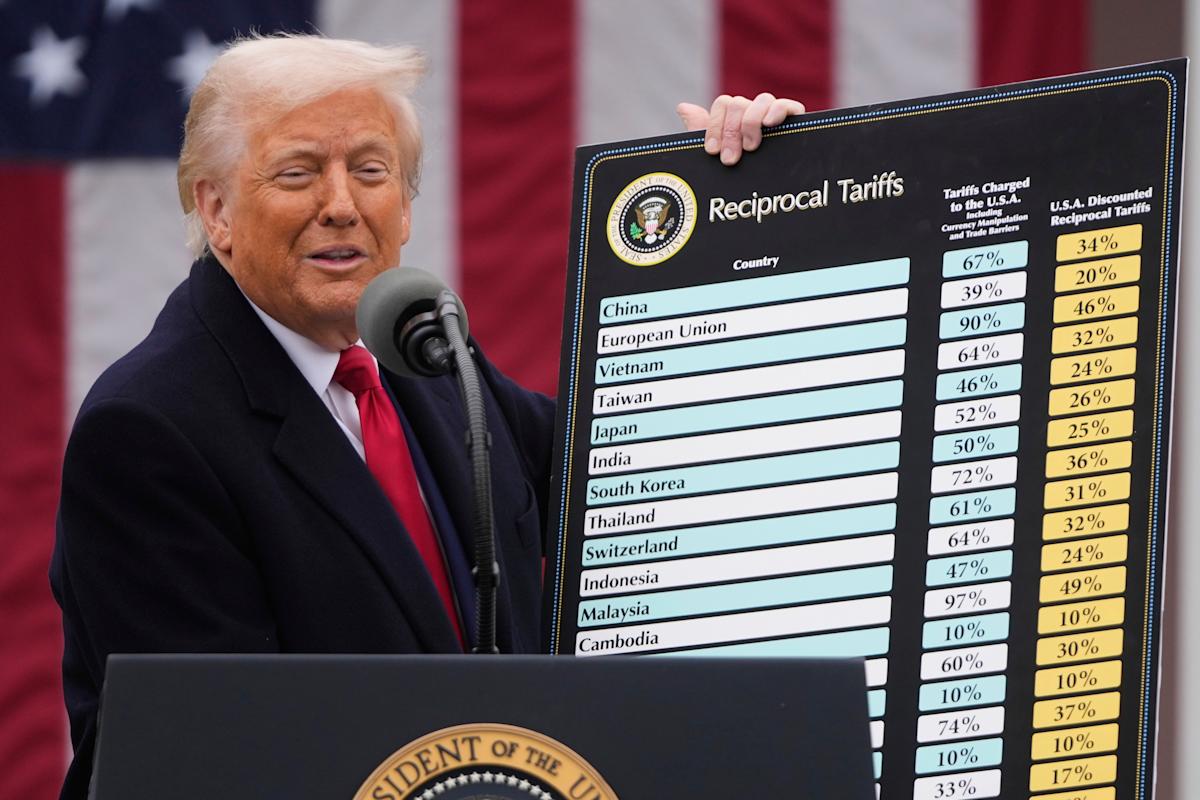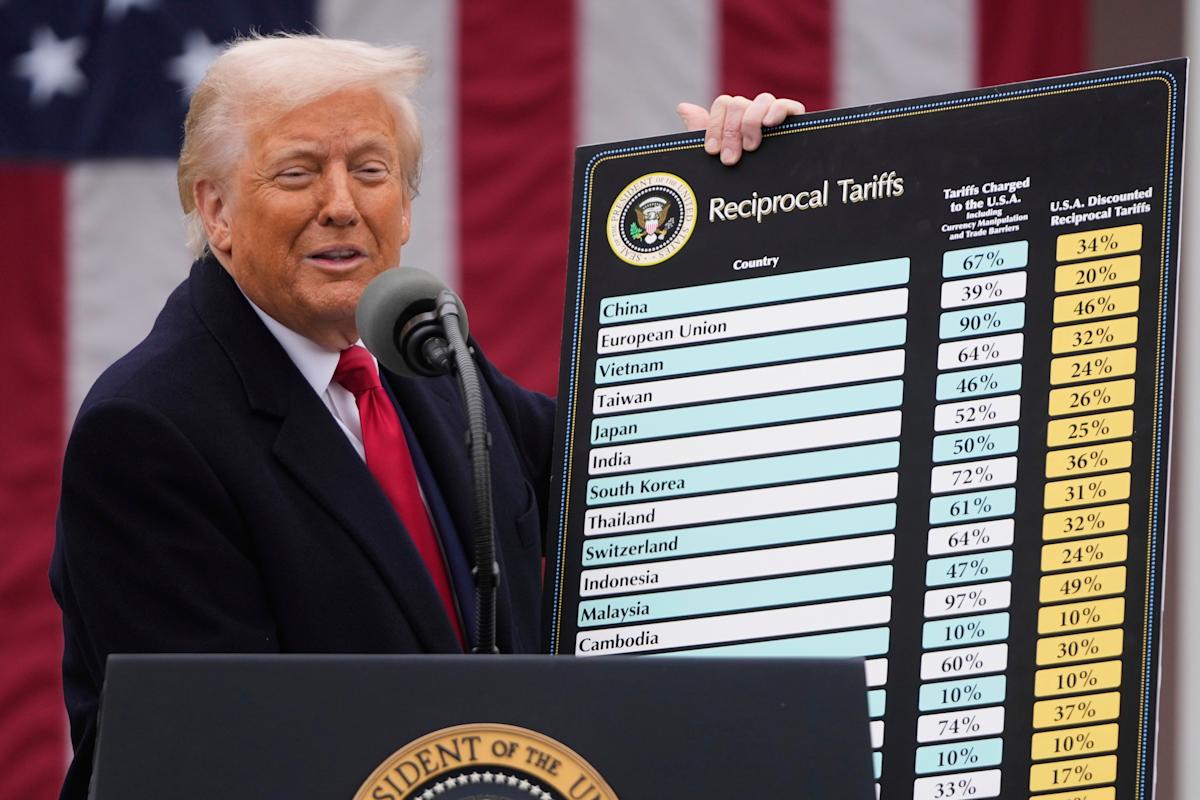Escalating Trade War: China Unleashes Fury as Tariffs on US Goods Skyrocket to 125%
The ongoing trade war between the United States and China has just reached a boiling point. In a move that’s set to send shockwaves across the global economy, China has announced a significant hike in tariffs on American goods, pushing the rates up to a staggering 125% from 84%. This bold retaliation comes as a direct response to the Trump administration’s latest trade policies, which have been criticized for sparking a full-blown economic standoff between the world’s two largest economies.

Trump’s Attempt to Reassure Investors and the Public

President Trump and members of his Cabinet have been attempting to reassure investors and the public that things will “work out” with China, despite the escalating trade tensions. This reassurance comes as the US-China trade war continues to weigh on investor sentiment and roil US stocks. In a statement, Trump emphasized that the trade war is “a good thing” and that the US will ultimately emerge victorious. However, his optimism has been met with skepticism by many, who point out that the tariffs imposed on Chinese goods have already had a significant impact on US businesses and consumers.
Treasury Secretary Scott Bessent, in a recent interview, expressed confidence in the US’s ability to negotiate new trade deals with partners. He stated that the 90-day pause on steep Liberation Day tariffs has provided a much-needed breathing room for both the US and China to reconsider their positions and work towards a mutually beneficial agreement. However, the baseline 10% tariff that went into effect on April 5 remains in place for all affected imports into the US, and the imposition of 125% tariffs by China on US goods has only intensified the trade conflict.
Practical Impact on Trade and Industry
USMCA: Tariff Rates for Compliant and Non-Compliant Goods
The United States-Mexico-Canada Agreement (USMCA) has established a framework for tariff rates for compliant and non-compliant goods. Compliant goods, which meet the agreement’s standards, are imported tariff-free when traded among the three countries. Non-compliant goods, on the other hand, are subject to a 25% tariff, except for energy and potash, which are tariffed at 10%. This differential treatment of compliant and non-compliant goods can have significant implications for businesses that operate in the region and trade with these countries.
For example, a US manufacturer that exports compliant goods to Canada or Mexico will not face any tariffs on those goods, while a US manufacturer that exports non-compliant goods will be subject to a 25% tariff. This can create a significant disincentive for businesses to invest in compliance and can lead to a loss of competitiveness in the global market.
- Compliant goods: tariff-free
- Non-compliant goods: 25% tariff (except for energy and potash, which are tariffed at 10%)
Impact on US-China Trade: A Shift to Non-Tariff Barriers?
The escalating trade tensions between the US and China have led to a significant increase in tariffs imposed on each other’s goods. However, this may not be the end of the trade conflict. In recent years, China has been shifting its focus from tariffs to non-tariff barriers, such as regulatory hurdles and bureaucratic red tape, to restrict US trade. This shift can have significant implications for US businesses that operate in China and can make it difficult for them to access the Chinese market.
For example, the imposition of a non-tariff barrier on US exports of agricultural products can have a significant impact on US farmers who rely on China as a major market for their goods. Similarly, the imposition of a non-tariff barrier on US exports of technology products can have a significant impact on US tech companies that rely on China as a major market for their goods.
- Tariffs: 125% on US goods, 10% baseline tariff on all affected imports into the US
- Non-tariff barriers: regulatory hurdles, bureaucratic red tape, and other restrictions on US trade
Practical Solutions for Businesses Affected by Tariff Hikes
Businesses affected by tariff hikes can take several practical steps to mitigate the impact of these tariffs. One option is to diversify their supply chain and source goods from countries that are not subject to the tariffs. Another option is to invest in compliance and ensure that their goods meet the standards required by the USMCA. Finally, businesses can also consider working with trade associations and advocacy groups to push for trade policies that benefit their industry.
For example, a US manufacturer that exports goods to China can consider sourcing those goods from a country that is not subject to the 125% tariffs. Similarly, a US tech company that exports technology products to China can consider investing in compliance and ensuring that their products meet the standards required by the USMCA.
- Diversify supply chain: source goods from countries not subject to tariffs
- Invest in compliance: ensure goods meet USMCA standards
- Work with trade associations: push for trade policies that benefit industry
Conclusion
In conclusion, the escalating trade tensions between the United States and China have reached a boiling point, as Beijing retaliates against Washington’s tariffs by hiking duties on US goods to a staggering 125% from 84%. The tit-for-tat trade war has sent shockwaves across global markets, leaving investors and economists bracing for the impact on international trade and economic growth. Our article has provided live updates on the Trump tariffs saga, detailing the series of events that led to this point, from the initial 25% tariffs on $200 billion worth of Chinese imports to China’s swift retaliation.
The significance of this development cannot be overstated. The trade war has far-reaching implications for the global economy, threatening to disrupt supply chains, stifle innovation, and spark a wave of protectionism. As the world’s two largest economies engage in a high-stakes game of economic brinksmanship, the consequences will be felt far beyond the borders of the United States and China. The ripple effects will be evident in industries ranging from technology and manufacturing to agriculture and finance, with small and medium-sized businesses likely to bear the brunt of the tariffs.
As we look to the future, one thing is certain – the trade war will continue to dominate headlines and shape the global economic landscape. The question on everyone’s mind is: what’s next? Will the Trump administration and Chinese leadership find a way to de-escalate the situation, or will the tariffs continue to rise, further entrenching the divisions between the two nations? One thing is clear – in this high-stakes game of economic one-upmanship, there can be no winners, only losers. As the world teeters on the brink of a full-blown trade war, we are reminded that, in the immortal words of Albert Einstein, “The unleashed power of the atom has changed everything save our modes of thinking and we thus drift toward unparalleled catastrophe.” Will we learn from history, or will we repeat the mistakes of the past? Only time will tell.



Add Comment